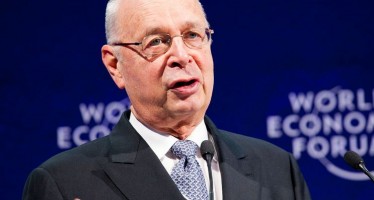Evan Harvey, Nasdaq – SPACs and ESG: Convergence or Collision?
 The capital markets love nothing more than a new idea, especially one that promises to reward a little due diligence with a lot of return. The idea of ESG (environmental, social, and governance) has tantalised investors in this way. According to the Forum for Sustainable and Responsible Investment, ESG investing is now a $17T market in the U.S. alone, up 42% over the last two years. But there is another, even newer idea on the horizon—Special Purpose Acquisition Companies, or SPACs—and its relationship with ESG investors may run both hot and cold.
The capital markets love nothing more than a new idea, especially one that promises to reward a little due diligence with a lot of return. The idea of ESG (environmental, social, and governance) has tantalised investors in this way. According to the Forum for Sustainable and Responsible Investment, ESG investing is now a $17T market in the U.S. alone, up 42% over the last two years. But there is another, even newer idea on the horizon—Special Purpose Acquisition Companies, or SPACs—and its relationship with ESG investors may run both hot and cold.
It may appear that I am blending two entirely different phenomena in this analysis. ESG is about performance measurement, tangible and intangible value creation, leveraging new signals to find an investible (and sustainable) edge. The practice requires an enlightened investment philosophy, or at least a willingness to evaluate and model new data. SPACs, on the other hand, are mere forms. A SPAC serves as a shell company with only one real goal: “raising money through an IPO to eventually acquire another company” (CNBC, 30 Jan 2021).
The SPAC form – sometimes called a “blank check” company – has been around for almost thirty years, but rarely listed on major exchanges or brought to market by bulge-bracket firms. But in the last 12 months, “more than 700 SPACs have flocked to New York exchanges, seeking to raise about $227B” (Bloomberg, 25 Mar 2021).
[In the interests of full disclosure, I should mention that Nasdaq has been a leading exchange in this space for more than a decade. In 2020, 71% of all U.S. business combinations – including Opendoor, DraftKings, and Luminar Technologies—made their debut on our market. In fact, Nasdaq continues to advocate for rule changes that would provide more opportunity and governance for SPAC listings.]
“The SPAC form – sometimes called a “blank check” company – has been around for almost thirty years, but rarely listed on major exchanges or brought to market by bulge-bracket firms.”
How does this listing form affect ESG-minded investors? On the plus side, “more than 20 SPACs have launched with environmental, social and governance principles in the past year, raising more than $5 billion through their IPOs” (Pitchbook, 16 Feb 2021). This serves a vital need in the market, because the demand for ESG-themed investments has outpaced the supply of ESG-positive public companies. And the boom has driven attention to some very ESG-friendly businesses, especially in the electric vehicle (EV) sector.
By some estimates, more than twenty EV SPACs came to market in 2020 alone. If you add up the IPO valuations and related PE rounds for those deals, that indicates a capital raise of $10B. Some of the most prominent brands in last year’s flurry include Nikola (EV and alt-fuel heavy duty trucks), Fisker (EV SUVs), XL Fleet (traditional fleet transformation and EV retrofitting) and Canoo (EVs built on skateboard engineering). But many EV-adjacent companies have also generated deals – battery makers, fuel cell innovators, charging infrastructure builders – leading to an industry transformation.
In terms of the climate crisis, this transformation may be right on time. Despite the modest environmental gains brought about by the lockdown and a limiting of climate destruction, the planet is still in dire shape. Over the last year, atmospheric emissions from travel and transportation were dramatically reduced, air and water quality was (at least marginally) improved, and yet “it merely slowed the accumulation of carbon in the atmosphere, leaving the world on course for more than 3.2C of warming by the end of this century (The Guardian, 29 Dec 2020). That would mean catastrophic sea rise, climate migration, weather instability, social and economic disruption – in short, a much more unpleasant (if not unsustainable) planet.
New investment and R&D in a field that directly addresses our climate imperatives is much needed. And there are good reasons why EV deals seem lately to be so popular. The SPAC structure itself can offer EV founders more efficient access to capital and the ability to build value. In a rapidly developing sector, this process moves much faster than it does on the PE side; the timeline from IPO to M&A is typically less than 24 months.
Lower interest rates tend to promote more investor appetite for risk and high-growth potential targets. In a world where electrification is commonly assumed to be necessary and immediate, EVs fit that bill. Because of the high-capital, high-competition environment that venture EV makers face, SPACs provide a vital channel for more of them to actually get to market.
Many SPAC filings specifically cite ESG dynamics as a business driver, well beyond the EV space – public benefit companies, social enterprises, projects based on specific diversity or inclusion targets. Demand is outpacing supply for these companies, too. But SPACs cannot specifically identify a future acquisition target at the time of the IPO, so ESG-focused investors must take some of this on faith. Without any data-driven proof points for investors to assess the ESG worthiness of the (actual, eventual) company, will they be willing to provide capital at the same level?
SPAC investors do have some safeguards, however. Regulations regarding the governance of transparency of SPAC listings is continuing to evolve. The theme, strategic intent, leadership history and sponsor qualities associated with a SPAC project can be assessed. Investors can also exit the deal if they don’t like the eventual acquisition target – so they would get their money back, if not their time.
Despite these concerns, alt-fuel innovation is an inevitable part of our environmental destiny. Businesses must not only manage their own resources efficiently and responsibly, but also seek new ways to reduce the global burden. Many argue that capital markets provide the only ecosystem that has the power and reach to actually address climate change – an existential threat to economic self-determination. And it may well prove that “the rise of SPACs is a capital markets innovation that matches the urgency and scope of our global sustainability challenges” (GreenBiz, 18 Feb 2021).
About the Author
Evan Harvey is the Global Head of Sustainability for Nasdaq. He also serves on the Board of Directors for the UNGC Network USA and the Global Sustainability Standards Board for the GRI.
You may have an interest in also reading…
Europe Has Nothing to Fear but Fear Itself
By Klaus Schwab, Dec 14th 2012 The eurozone will not break up. The price of departure is simply too great
IFC Study: Obstacles to Growth and Job Creation
A new study by IFC, a member of the World Bank Group, finds that much-needed jobs in developing countries can
Ernst & Young, Argentina: Tax Reform Affects Stocks and Dividends
On September 23 of last year a law (nr. 26,893) was introduced which significantly amend the Argentine income tax law.



















































































